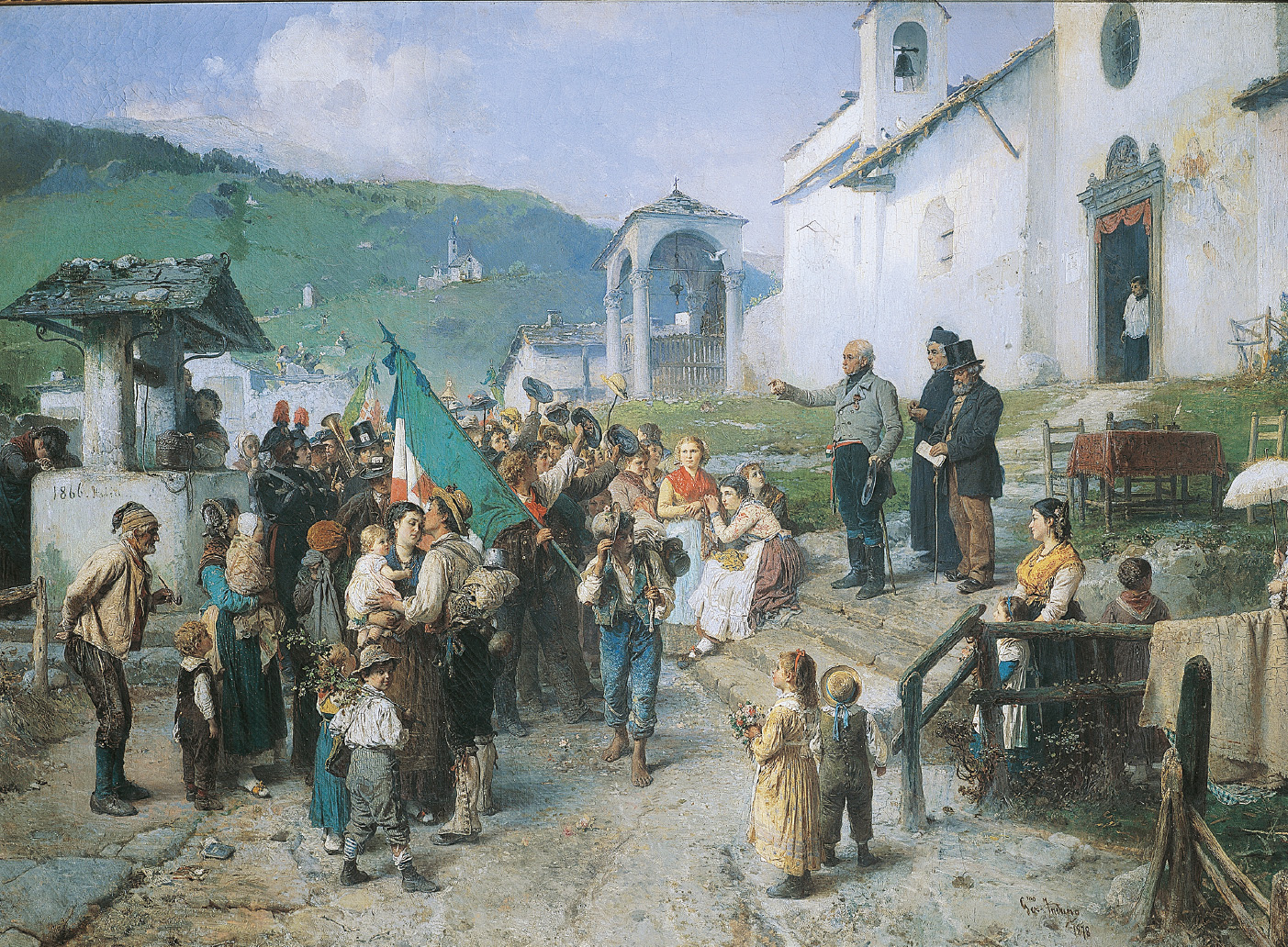A History of Western Society: Printed Page 752
A History of Western Society, Value Edition: Printed Page 758
The Age of Nationalism
1850–1914
In the years that followed the revolutions of 1848, Western society progressively developed, for better or worse, an effective organizing principle capable of coping with the many-sided challenges of the unfinished industrial and political revolutions and the emerging urban society. That principle was nationalism — mass identification with the nation-state. Just as industrialization and urbanization had brought vast changes to class relations, family lifestyles, and science and culture, the triumph of nationalism remade territorial boundaries and forged new relations between the nation-state and its citizens.
The rise of nationalism and the nation-state, enormously significant historical developments, was by no means completely predictable. Nationalism had been a powerful force since at least 1789, but the goal of creating independent nation-states, inhabited by people sharing a common ethnicity, language, history, and territory, had repeatedly failed, most spectacularly in the revolutions of 1848. By 1914, however, most Europeans lived in nation-states and the ideology of nationalism had become an almost universal faith in the Western world. The governments of the new nation-states took various forms, from conservative authoritarianism to parliamentary monarchy to liberal republicanism. Whatever the political system, in most cases the nation-state became increasingly responsive to the needs of its people, opening the political franchise and offering citizens at least rudimentary social and economic benefits. At the same time, nationalism, which before 1848 appealed primarily to liberals seeking political reform or national independence, had become a widespread and ever more conservative ideology. At its worst, populists and fanatics eagerly manipulated and sometimes abused the growing nationalist beliefs of ordinary people to justify exclusionary policies against Jews and other ethnic minorities, and to promote expansionary projects in overseas colonies. ■

CHAPTER PREVIEW
How did Napoleon III seek to reconcile popular and conservative forces in an authoritarian nation-state?
How did conflict and war lead to the construction of strong nation-states in Italy, Germany, and the United States?
What steps did Russia and the Ottoman Turks take toward modernization, and how successful were they?
What general domestic political trends emerged after 1871?
How did popular nationalism evolve in the last decades of the nineteenth century?
Why did the socialist movement grow, and how revolutionary was it?
Chronology
| 1839–1876 | Western-style Tanzimat reforms in Ottoman Empire |
| 1852–1870 | Reign of Napoleon III in France |
| 1859–1870 | Unification of Italy |
| 1861 | Freeing of Russian serfs |
| 1861–1865 | U.S. Civil War |
| 1866 | Austro-Prussian War |
| 1870–1871 | Franco-Prussian War |
| 1870–1878 | Kulturkampf, Bismarck’s attack on Catholic Church |
| 1873 | Stock market crash spurs renewed anti-Semitism, beginning in central and eastern Europe |
| 1880s | Educational reforms in France create a secular public school system |
| 1880s–1890s | Widespread return to protectionism among European states |
| 1883 | First social security laws to help workers in Germany |
| 1890–1900 | Witte initiates second surge of Russian industrialization |
| 1905 | Revolution in Russia |
| 1906–1914 | Social reform in Great Britain |
| 1908 | Young Turks seize power in Ottoman Empire |